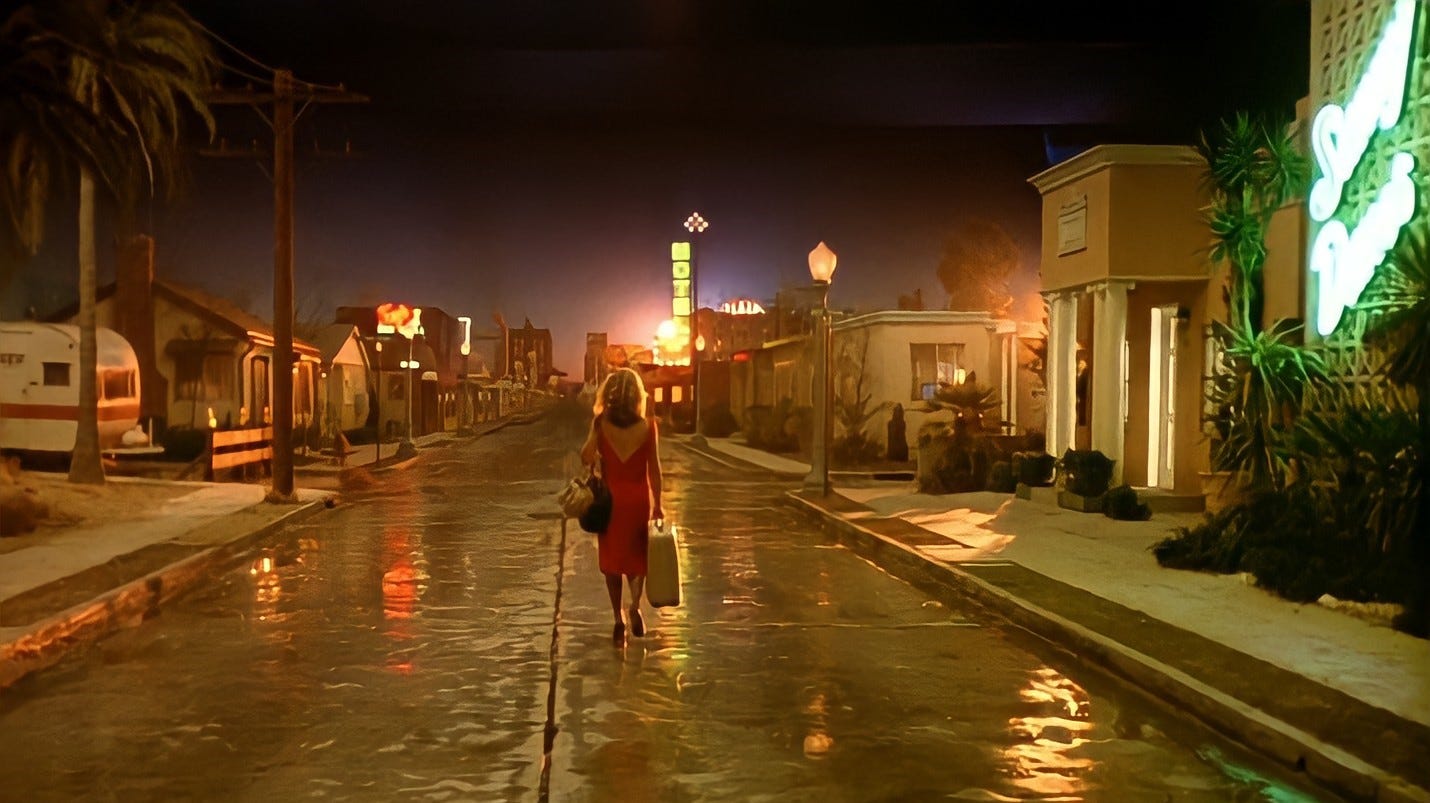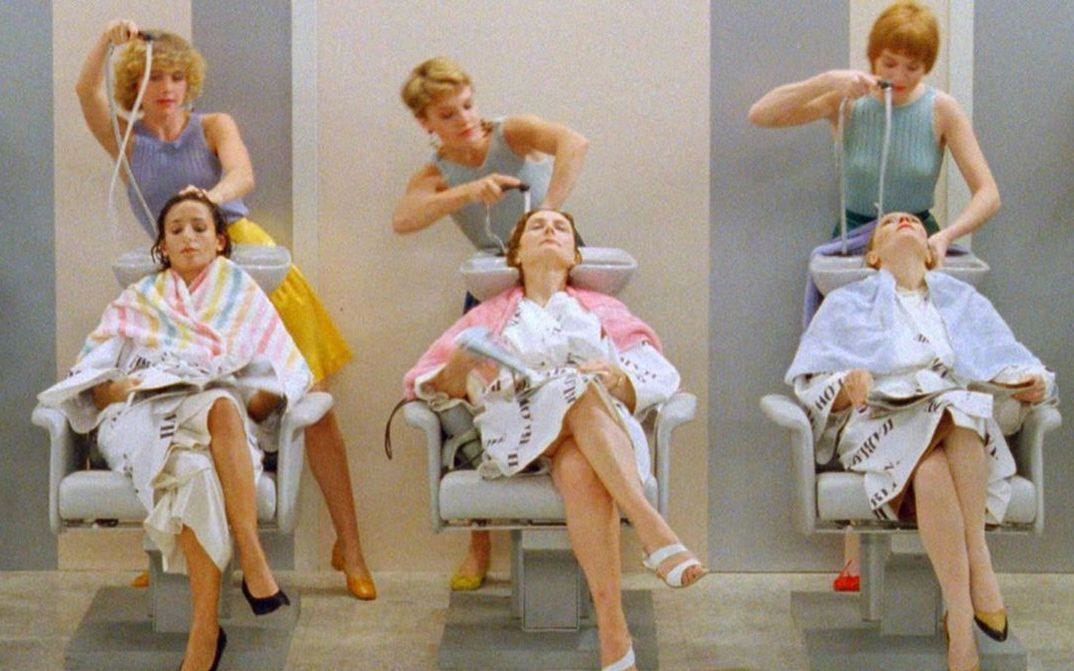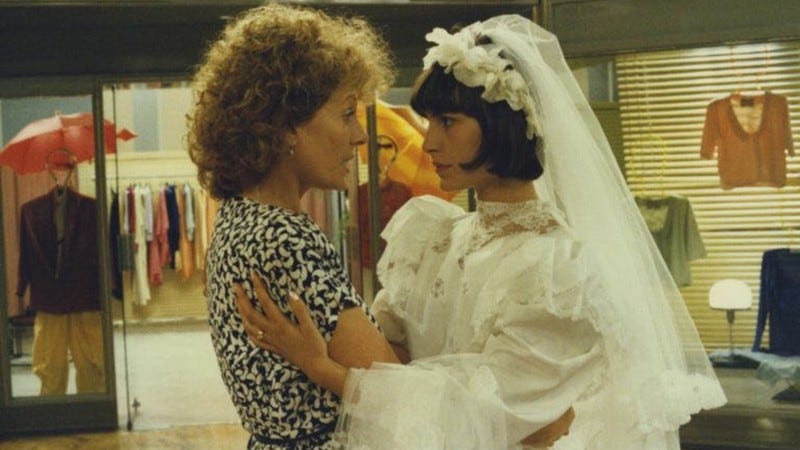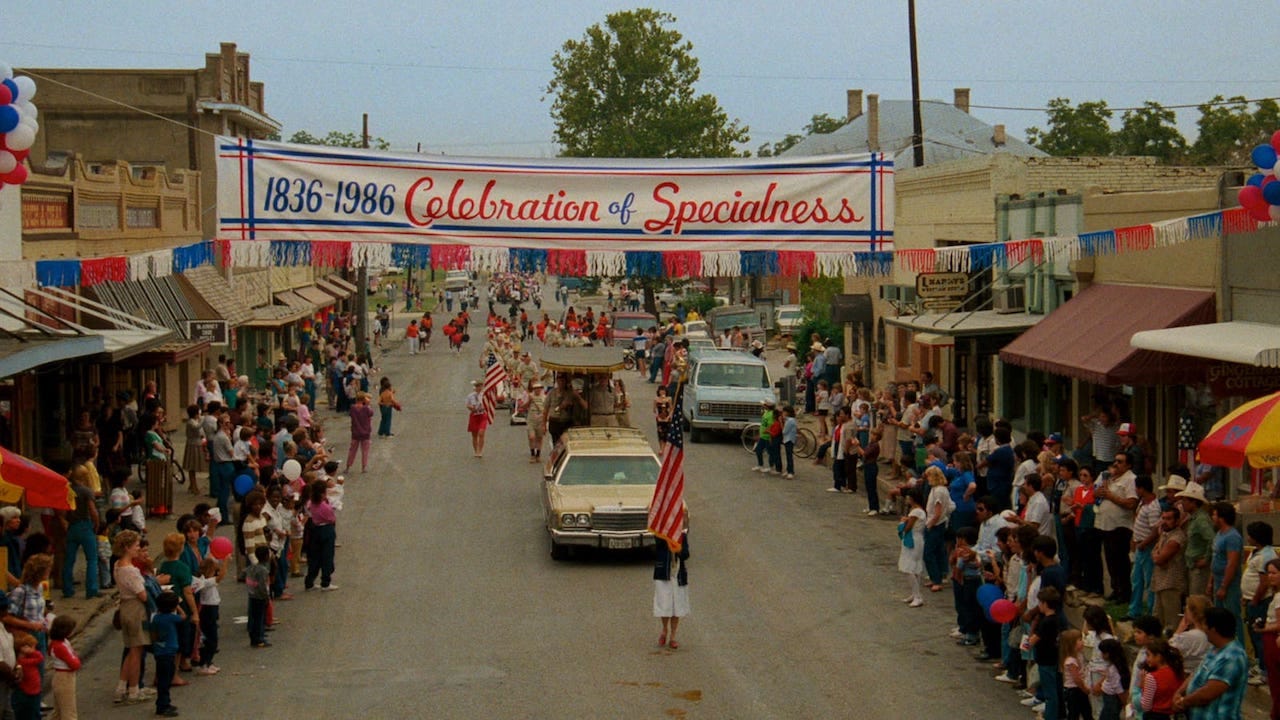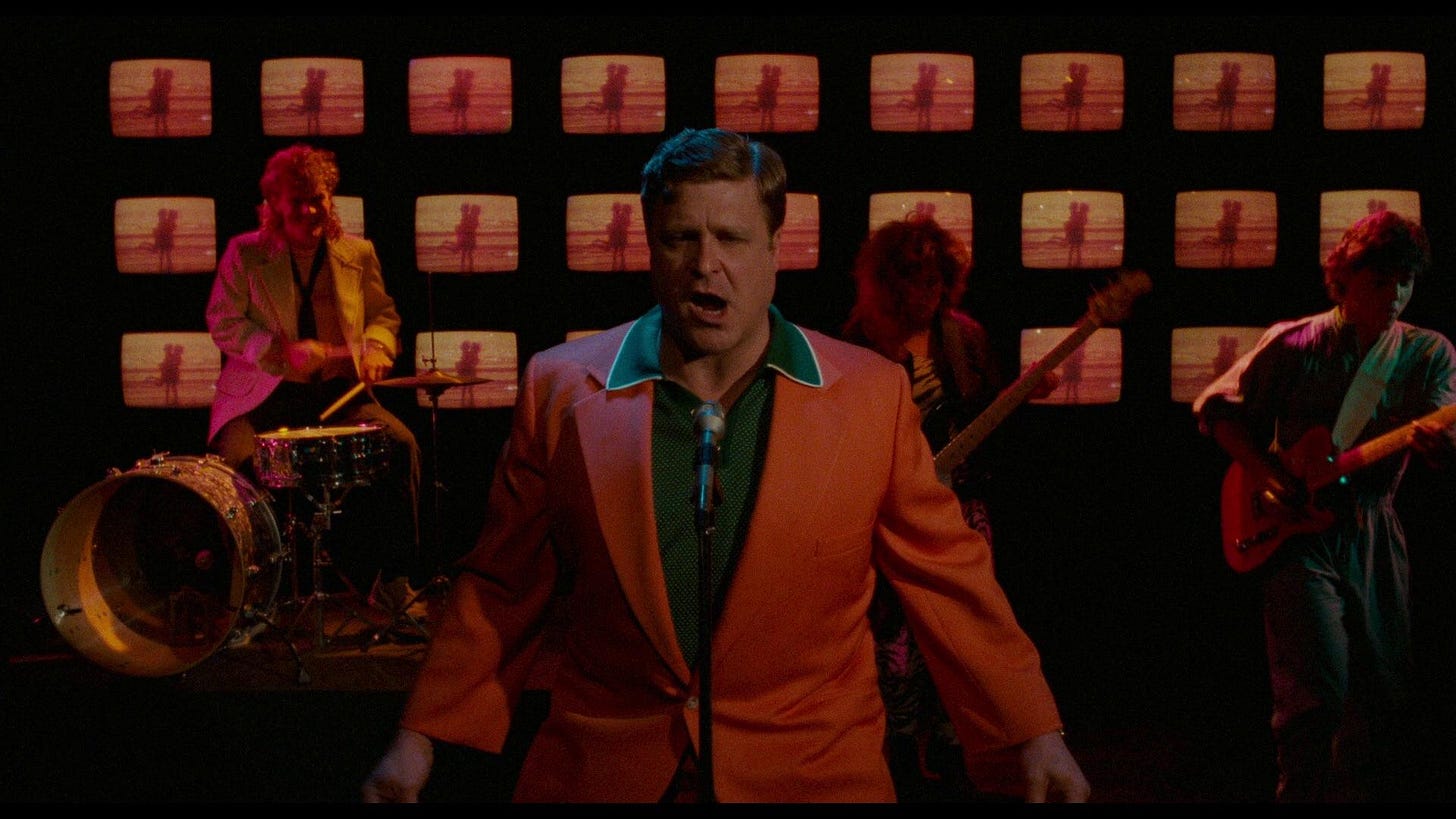The combination of music and story is as old as civilization itself. Until recent times, they were largely inextricable. From classical tragedy through Christian liturgy to grand opera and beyond, humans have felt compelled to bring events to life through rhythm and melody.
The form we think of as “the movie musical” is an American invention less than a century old. It started out with a bang, lived vibrantly for several decades, and then began a slow fade into pomp, camp, and irrelevance. There are a lot of reasons for this, the increasing fiscal and artistic conservatism of Hollywood being foremost among them.
But I also think the musical was a victim of its own success. As a reliable moneymaker for many decades, it was treated less as a distinctive format for storytelling than as a narrow genre, constrained by its own tropes and structures. Characters had to break out into song at emotional moments. Big production numbers were a must, mixed with more intimate ballads for contrast. A love story stood at the center - because what other reason could people possibly have to sing? Happy endings, as with most Hollywood films, were a must. And so on.
But there’s more than one way to make music central to a story. I absolutely adore weird musicals, especially those that push the format in unexpected directions. Crafting a movie musical around a singular vision may not be easy, but it’s an opportunity that’s been embraced by many adventurous filmmakers.
Over the past few weeks, Hope and I have watched three different film musicals - all from the 1980s - that point the way to paths less taken. As with everything I consume these days, I discovered eerie similarities between the three. Each of them has a distinct and untraditional way of integrating song and story; each employs traditional tropes of brightness and color to mask a deep well of sadness; each takes place in a heavily stylized version of the workaday world; and each crystallizes a different zeitgeist from that decade - a particularly important one to me, since it’s the one I grew up in.
Interestingly, we watched them in chronological order, so that’s how I’ll talk about them.
One From the Heart (1981) is famous for being the film that bankrupted Francis Ford Coppola. After the intensive location shooting of Apocalypse Now (1979), he clearly desired more direct control over the filming process, so he decided to create his next work entirely on soundstages where he could fine-tune every detail of production. But that doesn’t mean he went small - nope, instead he went ahead created one of the most lavish, intricate, expensive - and doomed - film projects of the late 20th century.
One From the Heart takes place entirely in Las Vegas, so Coppola rebuilt Las Vegas in its entirety. This is only a slight exaggeration - the film’s indoor sets include a full block of the Vegas strip, a populated suburban neighborhood (with neon flashing enticingly in the distance), a full-scale desert junkyard, and, most alarmingly, an entire freaking airport, replete with a taxiing jetliner.
All of this fits in nicely with a history of elaborate production values in musicals - but Coppola subverts the splendor at nearly every step. First of all, his story is a calculated inversion of the classic musical’s archetypal trajectory. Instead of a boy-meets-girl story, he follows the travails of a struggling working-class couple (Frederic Forrest and Teri Garr) whose better days are behind them - and who don’t have much to look forward to. They break up while celebrating their fifth anniversary (on the Fourth of July, no less) and proceed to have flings with fantasy partners (Nastassja Kinski and Raul Julia) who turn out to be more earthbound than they first appear. The glittering Vegas lights stand in steep contrast to the pettiness and desperation that play out underneath.
Even more unexpected is Coppola’s decision to keep the musical performances entirely offscreen. Not once does a character burst into song to express their emotions. That job is left entirely to Tom Waits and Crystal Gayle, who give unseen voice to the tunes that Waits penned for the project. These “numbers” are more than a soundtrack but less than what we expect from a film billed as a “musical.” They comment, enlighten, and set a mood, but they do so from a space floating above the action, with Waits and Gayle as slumming deities who comment on the behavior of the mere mortals below.
The overall effect of One From the Heart undermines the standard musical formula, with its dazzling, artificial surfaces deployed in the surface of everyday human misery. It bridges the gritty realism of the 1970s and the delirious neon shallowness of the decade to follow, taking what it wants from both while providing cold comfort to those who insist on one or the other. It’s no wonder it wasn’t a hit!1
The soundstages employed in Chantal Akerman’s Golden Eighties (1986) are several orders of magnitude less sumptuous than Coppola’s, but their insistent artifice makes the film an interesting companion piece. This is the most “traditional“ of the three musicals discussed here - characters are regularly impelled by narrative momentum into song, whether individually, in pairs, or in groups. But where Coppola celebrates cinema’s magical ability to elevate our common strivings, Akerman has something more devious in mind.
I’ll confess that this is the first Akerman film I’ve ever watched2 - one of these days I’ll tackle Jeanne Dielman, 23 quai du Commerce, 1080 Bruxelles, recently dubbed the greatest film in the history of humankind, but I’m not quite ready for a slow-moving 3.5-hour opus about the soul-crushing mundanity of modern life. But this description - and the fact that both films share a star in the luminous Delphine Seyrig - should prepare you for the deeper concerns that lie beneath the poppy luster of Golden Eighties.
This film is set entirely in an underground shopping mall, with the action taking place within and between the shops. On the surface, it shares One From the Heart’s concern with romance - the plot is driven by the usual wooing and spurning, which serves as the subject for most of the songs. But really, it’s a story about survival - what we sacrifice to make a living in a world driven by capitalism. Over time, we see each of these relationships as being in some way transactional, with hearts standing in for dollars (or, I guess, francs) at every turn.
Enhancing the film’s Brechtian roots is its charmingly slapdash approach to musical expectations. The synthy, pastel-hued songs are fun and engaging, but most of them come out of nowhere and stop in the middle without resolving. The production numbers are intentionally underrehearsed, giving them an engaging roughness that never allows you to take them too seriously. One of the characters is played by the French pop star Lio - and she’s not even allowed to sing! It’s like Akerman wants to keep us in suspension, waiting for gratification that never quite occurs - just like capitalism itself.
Over time, however, she does guide us to an emotional core, one which the entire commercial apparatus of the postwar world was designed to cover up: the century-defining Holocaust. Seyrig’s character, a middle-aged shopkeeper, is revealed to be a survivor of the camps, and her reckoning with this reality amidst the carefully cultivated surroundings becomes almost unbearably moving. In contrast to the broad satire and cheesy sets, these exquisitely rendered moments force us to zoom out and view this little mall from a world-historical view, putting all the little heartaches into perspective. They may hold out hope for a better future, but even the flashy, consumer-driven 1980s couldn’t outrun history.
By contrast, True Stories - released a few months after Golden Eighties in 1986 - opens by acknowledging the horrors of the past before proposing a path forward. The (to date) only feature film directed by Talking Heads frontman David Byrne, it follows a week in the life of a bunch of gentle eccentrics who live in the rural town of Virgil, Texas. Anticipating today’s widespread practice of opening an event by acknowledging the location’s indigenous forebears, Byrne, in his role as the film’s narrator (something of a Virgil himself), starts his film by briefly describing the centuries of genocide that lie beneath the feet of the town’s residents.
That bitter reality isn’t mentioned for the rest of the film, but it lingers throughout, just as it does over the entirety of our contemporary culture (whether we choose to notice or not). This thin haze of sorrow is one of the many things that struck me about True Stories while watching it for the first time in 25 years. I fancied myself a snarky ironist back then, so it should come as no surprise that I projected snarky irony onto the placid surface of Byrne’s vision. As his affectless narrator introduces us to the various citizens of Virgil - the big-hearted lovelorn lug (John Goodman), the reclusive kewpie-doll heiress (Swoozie Kurtz), the hyperoptimistic civic booster (Spalding Gray) - the film can feel like a bizarro version of Our Town, in which the Stage Manager implicitly invites us to mock the characters rather than see ourselves in them. There’s even a scene in a mall, which, per Golden Eighties, is usually portrayed as the height of vapid venality.
But viewing the film from the more forgiving precincts of middle age, I see Byrne’s flatness as more hard-won, his distance as respectfully curious rather than condescending. “Look at this,” he says in voiceover, as the camera pans down a street of four-car garages. “Who can say it isn't beautiful?” He means it. Considering all of the sorrow and bloodshed that brought us to this point, it would be a crime not to accept beauty where we find it. The past is something we have no control over, and the future is uncertain. So let’s make the most of the present, even if it’s flat all the way to the horizon and peopled with self-deluded, lonely weirdos.
But isn’t this a musical? Yes, and as a Talking Heads musical, it fills out the form without much regard for “the right way” of doing things. Songs only sprout up in places you would normally hear music: at a nightclub, during a fashion show, in the middle of a church service. At one point they perform in their own satirical video for “Love for Sale” as Swoozie Kurtz watches on TV, while the film’s rendition of “Wild Wild Life” features a few dozen cast members - including members of the band - lip-syncing to Byrne’s vocals while he watches from the audience. At other junctures, individual characters take on their own singing duties entirely, such as the Goodman’s climactic talent-show country ballad. The result is beatifically democratic - anyone, Byrne seems to be saying, can be a Talking Head.
Now that the ‘80s are history themselves, it’s easy to laugh at their excess and relative naïveté. There were plenty of people who stayed skeptical the whole time, but for a few minutes there, it was possible to convince ourselves that history was moving in the right direction. The heartbreaks were in the past, the money was in the bank, and our imperfect world could only get better. For these three very different directors, with their very different points of view, that was clearly something to sing about.
As a bonus, I want to mention an oddity that I couldn’t manage to fit into this essay. When our family was in France last fall, we bought an intriguing-looking LP of a French children’s musical called Emilie Jolie. Looking it up, we learned it was first released as an album in 1979 and then given a TV adaptation the following year with well-known singers like Henri Salvador and Françoise Hardy.
Spinning the record provided an odd novelty while doing the chores, but things got really weird when I looked up the TV special on YouTube:
I don’t know enough French to follow the lyrics, but tracking the plot on Wikipedia reveals it to be complete nonsense - the pure embodiment of “one damn thing after another.” There’s a blue rabbits’ symposium, a Broadway-besotted ostrich, a ballet of umbrella ribs, a “Cock and Donkey’s Song” - it makes about as much sense as it sounds. What I love about it is the notion that you can get a bunch of people to stand in front of a green screen to sing their one number, add psychedelic visuals, and then edit things together to make it seem like it was all on purpose. I am dead serious that this is the sort of thing I would love to make some day - composers inquire within!
Interestingly, the version Hope and I saw was a recut and release that just ended a short run at the IFC Center in the West Village, subtitled Reprise. From what I can gather, Coppola can’t stop tinkering with this film - the Reprise version is streamlined compared to the original, but introduces some confusing plot jumps (and apparently, in a follicle paradox, Teri Garr’s perm disappears and reappears, though I somehow missed that). I suspect this will be the standard version moving forward, unless Coppola gets bored after the release of his upcoming Megalopolis and decides to take it for one more spin.
I’ve actually watched two others since - earlier this month MoMA screened a couple of very rare Akerman films from 1982 that were positioned as being “dry runs” for Golden Eighties. I thought they’d be musicals, too, but they were actually even weirder. Toute une nuit (All Night Long) is a sweeping lyrical feature inspired by the work of German choreographer Pina Bausch - for 90 minutes, nameless and mostly wordless lovers old and young chase each other across Brussels in a cascade of bittersweet vignettes. I’ve never seen anything quite like it - truly hypnotic, to the point that I fell asleep for a few minutes (oops). The other was a short called Hôtel des Acacias, the product of a student workshop that features colorful characters pairing off in a rundown hotel - this one more accurately foreshadowed the antic mise-en-scène of Golden Eighties.






